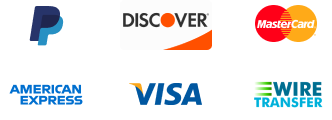The global Shingrix (Zostavax) market size is estimated to grow at a CAGR of 12.34% during the forecast period (2025–2033). The rising cases of herpes zoster due to factors like weakened immune systems, chronic diseases, and post-COVID-19 complications are driving the demand for preventive vaccines like Shingrix and Zostavax, fostering market growth.
Shingrix and Zostavax are vaccines utilized to prevent shingles (herpes zoster), a painful rash caused by the varicella-zoster virus. Shingrix is a recombinant, adjuvanted vaccine recommended by the CDC as the preferred option. It provides over 90% effectiveness and requires two doses.
Zostavax, a live attenuated vaccine, was previously used but is less effective, especially in older adults, and was discontinued in the U.S. in 2020. Shingrix is advised for individuals aged 50 and older, including those who previously received Zostavax, to ensure long-term protection against shingles and its complications, such as postherpetic neuralgia.
The surging geriatric population is a key driver of the Shingrix (Zostavax) market, as older individuals are more susceptible to shingles owing to weakened immune systems. According to the World Health Organization (WHO), the global population aged 60 and above is expected to reach 2.1 billion by 2050. This demographic shift significantly raises the demand for shingles vaccines.
Thus, as life expectancy rises, the need for effective shingle prevention continues to grow.
The high cost of shingles vaccination, particularly Shingrix, poses a significant barrier to market growth. Shingrix is more expensive than its predecessor, Zostavax, making it less accessible to individuals without adequate insurance coverage or government support. In low- and middle-income nations, affordability remains a major concern, limiting widespread adoption.
Additionally, the need for two doses further increases the overall cost, discouraging some patients from completing the full vaccination regimen. While reimbursement programs and government initiatives help mitigate financial burdens, the high upfront expense continues to hinder broader market penetration, especially in regions with constrained healthcare budgets.
The integration of shingles vaccines into national immunization schedules presents a significant growth opportunity for the global Shingrix (Zostavax) market growth. Countries like the United States and the United Kingdom have already incorporated Shingrix into routine vaccination programs for adults over 50.
As more governments recognize the public health benefits of shingles prevention, broader immunization mandates could further accelerate market growth worldwide.
| ATTRIBUTES | DETAILS |
|---|---|
| Study Period | 2021-2033 |
| Historical Year | 2021-2024 |
| Forecast Period | 2025-2033 |
| By Vaccine Type |
|
| By Indication |
|
| By Distribution Channel |
|
| Regional Insights |
|
The Live-Attenuated Vaccine (Zostavax) segment has witnessed a significant decline, primarily due to its lower efficacy compared to recombinant alternatives like Shingrix. Zostavax, developed by Merck, was once the standard for shingles prevention but offered only around 50-60% efficacy, decreasing further with age. Due to these limitations, regulatory bodies such as the U.S. FDA and CDC have recommended Shingrix over Zostavax. Additionally, Zostavax has been discontinued in several markets, further reducing its availability and market share. However, some regions with limited access to recombinant vaccines still rely on it.
The shingles prevention segment dominates the market, as vaccination is the most effective method to prevent herpes zoster. With the increasing global geriatric population and rising awareness, demand for shingles vaccines continues to grow. Shingrix leads this segment due to its high efficacy (over 90%) and longer-lasting immunity compared to Zostavax. Government-backed immunization programs and insurance coverage expansions further drive adoption. Additionally, healthcare professionals emphasize early vaccination, especially in individuals aged 50 and above, making this segment the primary revenue contributor in the market.
The hospital pharmacies segment plays a crucial role in the distribution of Shingrix (Zostavax) vaccines, particularly for high-risk individuals such as immunocompromised patients. Hospitals often administer vaccines as part of routine immunization programs, ensuring accessibility for elderly and at-risk populations. Physicians prefer hospital settings for vaccine administration due to better monitoring and post-vaccination care. Additionally, partnerships between healthcare providers and vaccine manufacturers facilitate bulk procurement, making hospitals a significant distribution channel. With increasing hospital-based immunization campaigns, this segment is expected to grow steadily, particularly in developed healthcare markets.
North America is the leading region in the global Shingrix (Zostavax) market, driven by high awareness, strong healthcare infrastructure, and extensive immunization programs. The U.S. Centers for Disease Control and Prevention recommends Shingrix for adults aged 50 and older, significantly increasing its uptake. In 2023, GSK reported that Shingrix sales surged by 20% in North America, fueled by rising vaccination rates and government-backed programs, such as Medicare coverage for shingles vaccines under Part D prescription drug plans.
The region also benefits from pharmaceutical innovation and regulatory approvals. In 2021, GSK expanded Shingrix's approval to include immunocompromised adults aged 18 and older, further driving market growth. Additionally, the presence of leading vaccine manufacturers, such as Pfizer and Moderna, has intensified research into next-generation shingles vaccines, including mRNA-based solutions. Moderna's mRNA-1468, currently in clinical trials, could reshape the shingles vaccine market, enhancing North America's dominance.
Furthermore, pharmacy chains like CVS and Walgreens have made shingles vaccination more accessible by integrating it into routine immunization services. Moreover, the growing elderly population, with nearly 71 million Americans projected to be 65+ by 2030, further supports long-term market expansion. With continuous advancements, strong reimbursement policies, and proactive healthcare initiatives, North America will maintain its leading position in the global market.

Request Table of Contents (TOC), Please Fill below form



